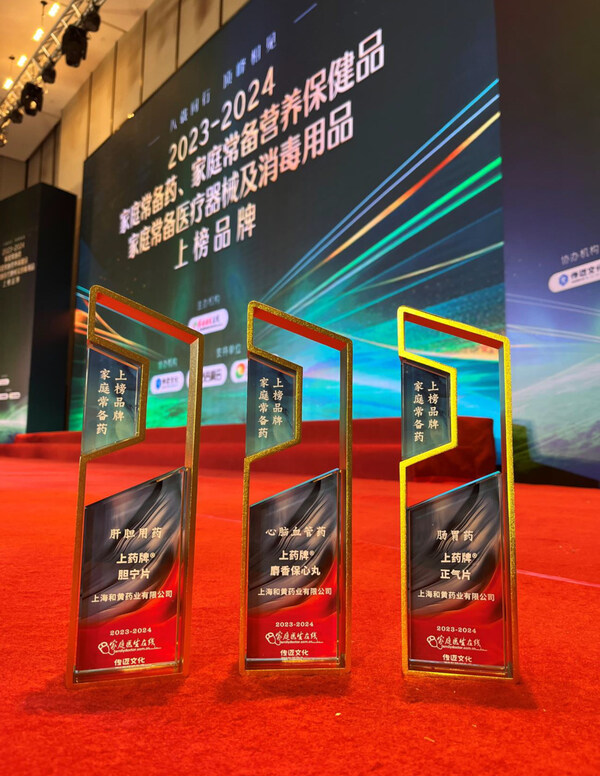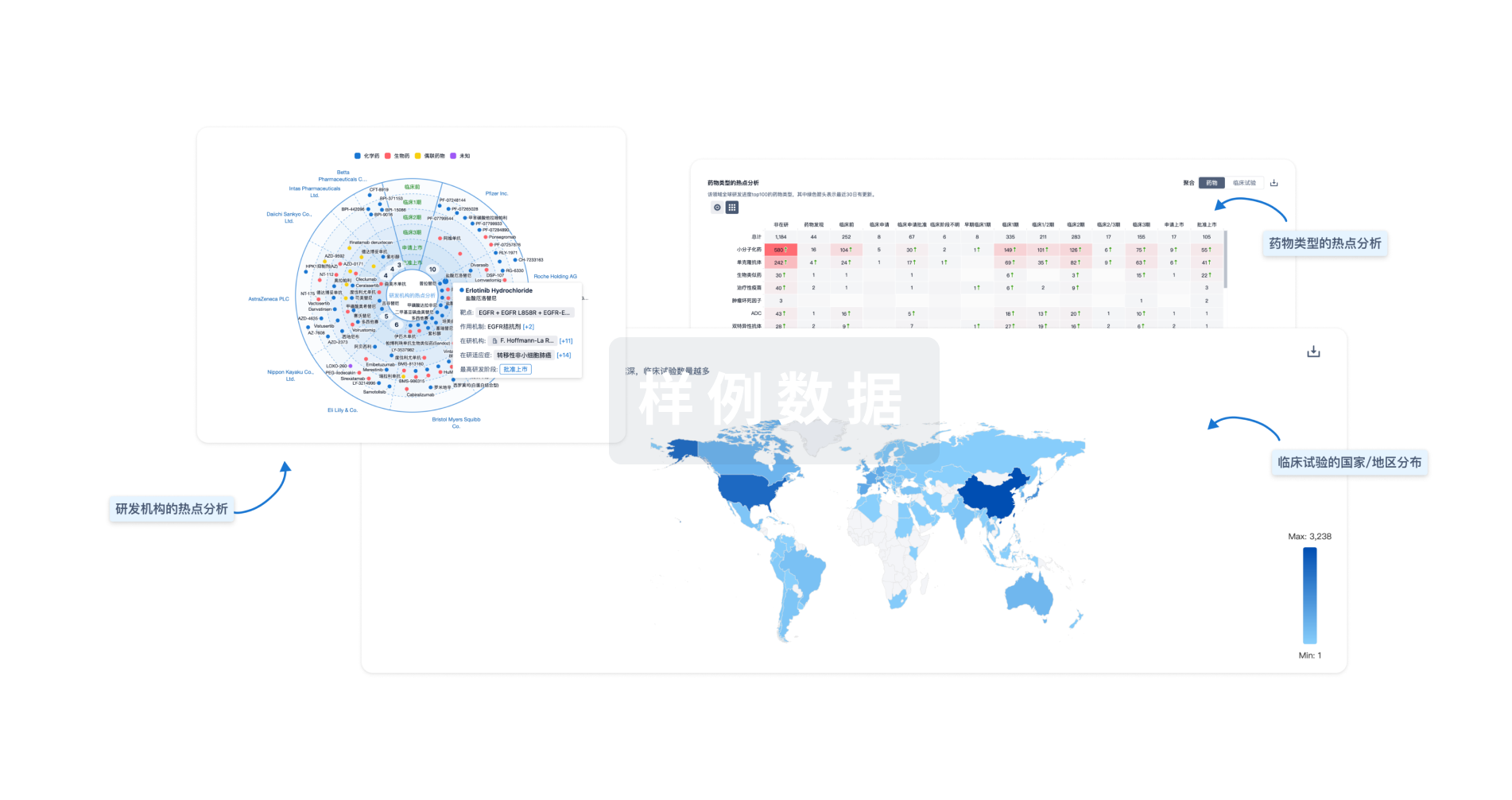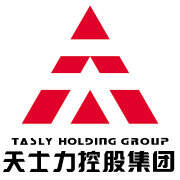预约演示
更新于:2025-05-07
Blood Stasis
血瘀
更新于:2025-05-07
基本信息
别名 Blood Stagnation、Blood Stasis、Blood Stasis Syndrome |
简介- |
关联
18
项与 血瘀 相关的药物靶点- |
作用机制- |
在研机构 |
原研机构 |
非在研适应症- |
最高研发阶段批准上市 |
首次获批国家/地区 中国 |
首次获批日期2020-03-07 |
靶点- |
作用机制- |
在研机构 |
原研机构 |
在研适应症 |
最高研发阶段批准上市 |
首次获批国家/地区 中国 |
首次获批日期2018-05-29 |
靶点- |
作用机制- |
原研机构 |
最高研发阶段批准上市 |
首次获批国家/地区 中国 [+6] |
首次获批日期1994-01-01 |
90
项与 血瘀 相关的临床试验NCT06908473
A Multicenter, Double-Blind, Randomized Controlled Study on the Impact of Tongmai Jiangtang Capsules on the Risk of Cardiovascular and Cerebrovascular Events in Metabolic Syndrome
1. Conduct a large-sample, multicenter, superiority, double-blind, randomized controlled clinical trial to verify the efficacy of TJC in reducing the risk of cardiovascular and cerebrovascular events in patients with metabolic syndrome at high cardiovascular and cerebrovascular risk (HCR-MS).
2. Further construct an evaluation system for the long-term cardiovascular and cerebrovascular benefits of traditional Chinese medicine in regulating glucose and lipid metabolism through the evaluative study of the cardiovascular and cerebrovascular benefits of TJC.
2. Further construct an evaluation system for the long-term cardiovascular and cerebrovascular benefits of traditional Chinese medicine in regulating glucose and lipid metabolism through the evaluative study of the cardiovascular and cerebrovascular benefits of TJC.
开始日期2025-05-01 |
申办/合作机构 广东省中医院 [+1] |
NCT06872086
Assessment of Blood Indices As Predictors of Disease Activity in Systemic Lupus Erythematosus
This case-control study aims to explore the relationship between specific blood indices (lymphocyte-monocyte ratio, neutrophil-to-lymphocyte ratio, platelet-to-lymphocyte ratio, and systemic immune-inflammatory index) and disease activity in patients with systemic lupus erythematosus (SLE).
The study includes 70 SLE patients and 70 healthy controls, matched for age and gender, recruited from Assiut University Hospital.
Disease activity is assessed using the SLEDAI-2K score, and blood indices are analyzed to determine correlations with disease activity.
The study includes 70 SLE patients and 70 healthy controls, matched for age and gender, recruited from Assiut University Hospital.
Disease activity is assessed using the SLEDAI-2K score, and blood indices are analyzed to determine correlations with disease activity.
开始日期2025-05-01 |
申办/合作机构 |
NCT06893172
Effectiveness of Warm Acupuncture for Postherpetic Neuralgia in the Context of the Qi Stagnation and Blood Stasis Syndrome: a Randomized Controlled Trial
Postherpetic neuralgia (PHN) is the most common clinical complication of herpes zoster. PHN can persist for months to years, and in some cases, the pain may last for more than five years. Patients suffering from severe, prolonged pain endure significant distress, which seriously affects their quality of life and daily activities. Moreover, PHN can lead to insomnia, anxiety, depression, or even suicide. Currently, the treatment of PHN primarily focuses on pain management. First-line treatment options include gabapentin, pregabalin, tricyclic antidepressants, and 5% lidocaine patches.
Acupuncture is a widely used non-pharmacological therapy. A large number of clinical trials have demonstrated its effectiveness in treating various neuropathic pain conditions, including PHN. Acupuncture not only reduces pain perception but also alleviates anxiety and improves the quality of life for PHN patients. Among different acupuncture techniques, Warm Acupuncture (WA) is considered the most effective for treating peripheral neuropathic pain. Clinical case reports have also shown its pain-relieving effects in PHN patients.
However, there has been no study in Vietnam on the effectiveness of WA in pain reduction for patients with PHN. Therefore, this study is conducted to evaluate whether WA is effective in reducing pain and ensuring safety for treating PHN patients with Qi Stagnation and Blood Stasis syndrome. The findings will serve as a basis for the broader application of WA in the treatment of PHN.
Acupuncture is a widely used non-pharmacological therapy. A large number of clinical trials have demonstrated its effectiveness in treating various neuropathic pain conditions, including PHN. Acupuncture not only reduces pain perception but also alleviates anxiety and improves the quality of life for PHN patients. Among different acupuncture techniques, Warm Acupuncture (WA) is considered the most effective for treating peripheral neuropathic pain. Clinical case reports have also shown its pain-relieving effects in PHN patients.
However, there has been no study in Vietnam on the effectiveness of WA in pain reduction for patients with PHN. Therefore, this study is conducted to evaluate whether WA is effective in reducing pain and ensuring safety for treating PHN patients with Qi Stagnation and Blood Stasis syndrome. The findings will serve as a basis for the broader application of WA in the treatment of PHN.
开始日期2025-04-01 |
100 项与 血瘀 相关的临床结果
登录后查看更多信息
100 项与 血瘀 相关的转化医学
登录后查看更多信息
0 项与 血瘀 相关的专利(医药)
登录后查看更多信息
3,211
项与 血瘀 相关的文献(医药)2025-06-01·Phytomedicine
Traditional Chinese medicine in chronic rhinosinusitis: Mechanisms and postoperative recovery
Article
作者: Zhang, Xi-He ; Zhao, Li-Chun ; Li, Wei ; Chen, Long ; Sun, Qing-Jia
2025-06-01·Food and Chemical Toxicology
Microparticles introduced by the processing of traditional Chinese medicine Hirudo nipponica Whitman might pose threat to patients
Article
作者: Yan, Muxian ; Fang, Xilin ; Gong, Han ; Yan, Muting ; Zhu, Ziying ; Zhong, Riying ; Zhang, Houxiang
2025-05-01·Journal of Ethnopharmacology
Multi-omics perspective on Huoluo Xiaoling Pellet: key bioactive compounds and related mechanisms for the treatment of knee osteoarthritis
Article
作者: Lin, Nianzhen ; Liu, Lanbo ; Tang, Ling ; Yang, Jiashun ; Lei, Li ; Wang, Xiwen ; Lao, Ziying ; Guo, Xiaowen ; Xu, Hui ; Zhang, Jingyi
18
项与 血瘀 相关的新闻(医药)2025-02-24
·米内网
精彩内容
近日,CDE官网显示,千金药业的中药1.1类新药活血消异颗粒IND申请获承办,推测用于治疗子宫内膜异位症。米内网数据显示,2023年中国三大终端六大市场妇科中成药销售额超过190亿元。
中药1.1类新药活血消异颗粒推测用于治疗子宫内膜异位症。子宫内膜异位症是慢性、难治性妇科疾病,以“血瘀”为基本病机,气滞、气虚、寒凝、肾虚、湿热等错杂为患。
米内网数据显示,2023年中国三大终端六大市场(统计范围详见本文末)妇科中成药销售额超过190亿元,同比增长0.38%;2024年上半年其销售额超过100亿元,同比增长4.38%。
中国三大终端六大市场妇科中成药销售情况(单位:万元)来源:米内网格局数据库
2024年上半年中国三大终端六大市场妇科中成药TOP5品牌分别为海南碧凯药业的保妇康栓、白云山中一药业的滋肾育胎丸、贵阳新天药业的坤泰胶囊、株洲千金药业的妇科千金胶囊、山西广誉远的定坤丹。
2024H1中国三大终端六大市场妇科中成药TOP5品牌来源:米内网格局数据库
千金药业是国内妇科中成药龙头企业,公司累计已有34个妇科中成药品种获批上市。其中,妇科千金丸、妇科千金片、妇科千金胶囊、妇科断红饮胶囊、椿乳凝胶、补血益母丸等10个品种为中药独家品种。
资料来源:米内网数据库、CDE
注:米内网《中国三大终端六大市场药品竞争格局》,统计范围是:城市公立医院和县级公立医院、城市社区中心和乡镇卫生院、城市实体药店和网上药店,不含民营医院、私人诊所、村卫生室,不含县乡村药店;上述销售额以产品在终端的平均零售价计算。
本文为原创稿件,转载请注明来源和作者,否则将追究侵权责任。投稿及报料请发邮件到872470254@qq.com稿件要求详询米内微信首页菜单栏商务及内容合作可联系QQ:412539092
【分享、点赞、在看】点一点不失联哦
临床申请
2024-12-18
·梅斯医学
一年一度的中国十大医学研究评选活动拉开帷幕,2024年我国科学家在医学领域取得了丰硕的成果,这些成就不仅彰显了我国科研实力的显著提升,也为世界医学的发展做出了巨大的贡献。
梅斯医学已经连续7年发布了年度十大医学研究进展。今年我们依旧通过线上评选的方式,评出“2024年度最受瞩目的中国十大医学研究”,这些研究具有原创性、突破性和引领性,在推进医疗实践、改善医疗质量方面具有重要的意义。
回顾这一年,中国科学家在中医药领域取得了众多令人瞩目的研究成果。那么,究竟有哪些研究能够荣登年度十大医学之列呢?
梅斯医学诚邀您一起票选出年度十大研究,投下您宝贵的一票
1. 评选活动中,须本着公开、公平、公正的原则,保持正常的心态参与投票。
2. 禁止任何人采用任何形式进行刷票,投票以后台实时监测的真实数据为准,恶意刷票数据将做无效处理。
3. 本次投票按照投票结果及专家评分,评选出的“2024年度中国中医药领域的十大医学研究”。
4. 评选结果将陆续发布在“梅斯医学”公众号,敬请关注!
投票截止时间
2024年12月27日 00:00
— 01 —
Lancet:宋莉莉/郭建文教授发表关于传统中药中风醒脑方治疗急性脑出血研究:一项多中心随机、安慰剂对照的双盲临床研究
doi: 10.1016/S0140-6736(24)02261-X
急性自发性脑出血是最严重的脑卒中类型,但有效治疗手段十分匮乏,且局限在发病早期以减少血肿体积为目的。中药FYTF-919(中风醒脑液)是一种由4种中草药制成的口服制剂,在中医理论上被认为具有促进血肿吸收和调节免疫的作用,在中国有多年应用于治疗脑出血的临床经验。CHAIN研究旨在采用标准的随机对照试验方法评估FYTF-919在中重度脑出血患者中的临床有效性和安全性。
为了评估“中风醒脑方”的临床有效性和安全性,研究团队在中国26家医院开展了一项历时三年的前瞻性、大规模、多中心随机安慰剂对照双盲试验。
研究团队纳入了在症状发生后48小时内被诊断为有症状的自发性脑出血(经脑影像学证实)并导致中度至重度神经功能缺损的成年人(年龄≥18岁),神经功能缺损的定义为美国国立卫生研究院卒中量表(National Institute of Health Stroke Scale)评分至少为8分或格拉斯哥昏迷量表(Glasgow Coma Scale)评分为7-14分。试验表明,传统中药复方“中风醒脑方”对中度至重度脑出血患者的功能恢复、生存期和健康相关生活质量的影响,与安慰剂并无差别。
发表期刊:Lancet. 2024 Nov 30;404(10468):2187-2196
通讯作者/关键作者:宋莉莉;郭建文
主要作者单位:复旦大学类脑智能科学与技术研究院;广东省中医院
— 02 —
JAMA Internal Medicine:贾振华教授团队揭秘,中医药复方降低糖尿病风险高达41%!
doi: 10.1001/jamainternmed.2024.1190
糖尿病是一种由胰岛素绝对或相对分泌不足以及利用障碍引发的,以高血糖为标志的慢性疾病。前期阶段,具体表现为空腹血糖受损(IFG)、糖耐量受损(IGT)及其合并状态。据美国糖尿病协会所发布的报告揭示,高达50%的糖尿病前期患者在短短五年内即会进展为糖尿病。
相较于IFG,IGT与糖尿病及心血管疾病(CVD)的风险增加之间,存在显著的相关性。尤为引人关注的是,当IGT与肥胖、血脂异常及高血压等其他危险因素并存时,个体罹患糖尿病的风险将进一步攀升,而患CVD的风险更已被确凿的证据表明增加了34%。
中医药复方能否预防糖尿病?研究团队就中医药复方“津力达颗粒”开展了研究。津力达颗粒是在络病理论指导下研发的创新中药,由17种中药成分组成,于2005年获得中国国家药品监督管理局批准,用于治疗2型糖尿病,既往临床研究发现,津力达可改善糖脂代谢紊乱,降低血糖和糖化血红蛋白,改善血糖波动,促进血糖达标。
结果显示,津力达颗粒能够通过针对性地改善多种代谢异常,有效降低IGT患者进展为糖尿病的风险。在此过程中,津力达颗粒的安全性及有效性得到了充分证实,因此,其作为一种极具潜力的干预手段,为那些患有多种代谢紊乱的IGT患者提供了预防糖尿病发病的新途径。
发表期刊:JAMA Intern Med. 2024 Jul 1;184(7):727-735
通讯作者/关键作者:贾振华;仝小林院士;连凤梅
主要作者单位:中国中医科学院广安门医院
— 03 —
JAMA Network Open:董强教授团队揭示大型临床试验证实通心络显著改善脑卒中预后
doi: 10.1001/jamanetworkopen.2024.33463
通心络作为一种中药复方制剂,其组方基于中医理论中“活血化瘀”的核心理念。该方由12味中药组成,包括檀香、降香、土鳖虫、水蛭、全蝎、赤芍、苏木、冰片、蜈蚣、穿山甲、麝香和红花。在中医理论中,这些药物共同发挥活血化瘀、通络止痛的功效,特别适用于治疗由血瘀引起的各种疾病,包括中风。
现代药理学研究揭示,通心络具有多靶点、多途径的作用机制,包括保护血脑屏障、促进神经可塑性、抑制炎症反应、减轻氧化应激等。这种多重作用机制与中医整体观和辨证论治的理念高度契合,也为其在复杂疾病如脑卒中中的应用提供了科学基础。
此次TISS试验采用了最严格的随机、双盲、安慰剂对照设计,共纳入2007名急性缺血性脑卒中患者。患者在发病72小时内被随机分配接受通心络或安慰剂治疗,疗程为90天。这种设计不仅符合国际最高标准的临床试验要求,也充分考虑了中医药的特点,为评估中药复方的长期疗效提供了可能。结果显示,对于发病72小时内的轻中度急性缺血性中风患者,在标准治疗的基础上,与安慰剂相比,加用通心络可显著改善90天功能预后,且年龄<60岁、发病48小时内的患者以及糖尿病患者似乎更有可能从中获益。
发表期刊:JAMA Netw Open. 2024 Sep 3;7(9):e2433463
通讯作者/关键作者:董强
主要作者单位:复旦大学附属华山医院
— 04 —
Journal of Advanced Research:吴迪炯/开国银教授揭秘中药有效成分逆转白血病BCL-2抑制剂耐药
doi: 10.1016/j.jare.2024.10.003
急性髓系白血病(AML)作为一种恶性克隆性疾病,其特征是骨髓原始细胞增殖伴扩增和分化阻滞,导致正常造血作用失效,并导致危及生命的血细胞减少和输血依赖。
中药应用治疗白血病具有悠久的历史,研究人员于上个世纪70年代研发了抗AML的一线用药“高三尖杉酯碱”。“抗白延年汤”是浙江省中医院血液科治疗白血病的经验方,研究团队前期对其进行了相应方药组份的筛选,发现其中的一个有效成分松萝酸可能具有特殊的抗耐药机制。
结果显示:松萝酸在低细胞毒性水平下,成功恢复了对产生ABT-199耐药性的AML细胞系对ABT-199的敏感性,并在小鼠异种移植模型中显著增加了ABT-199的抗白血病活性。从机制上讲,松萝酸和ABT-199的联合通过血红蛋白调节的抑制激酶(HRI)协同提高了综合应激反应(ISR)相关基因ATF4、CHOP和NOXA的表达,同时促进了抗凋亡蛋白MCL-1的降解。ISRIB,一种阻断ISR的化合物,能够逆转联合给药引起的AML细胞生长抑制和凋亡,以及ISR相关基因表达的增加和MCL-1蛋白的抑制。此外,ISR介导的MCL-1的下调与MCL-1在丝氨酸159位点的磷酸化增加以及随后蛋白酶体降解有关。上述研究为复发或难治性白血病患者提供了新的治疗选择,未来的研究有必要进一步验证这些初步发现,并探索这种联合方法的临床潜力。
发表期刊:J Adv Res. 2024 Oct 9:S2090-1232(24)00436-3
通讯作者/关键作者:吴迪炯;开国银;李曼;晋李;洪耀南
主要作者单位:浙江省中医院;浙江中医药大学
— 05 —
Adv Sci:华茜/梁兴杰教授团队揭秘中医复方“君-臣-佐-使”配伍理论
doi: 10.1002/advs.202306140
中医以其独特理论体系及丰富临床实践广泛应用于多种疾病治疗。方剂是在中医“君-臣-佐-使”配伍理论指导下的一种内服治疗手段。中药复方多成分的特性,使其物质基础阐释受到阻碍。近年研究表明中药汤剂中存在的自组装纳米结构可能是其发挥药效的主要组分。
研究者通过纳米技术,以中药复方芪银三两三(QY305)为例,阐释方剂发挥药效物质基础。研究人员提出:方剂煎煮过程中,中药多成分自组装产生的纳米结构为“君”,是方剂发挥药效的重要物质基础。研究通过临床观察及不同动物模型明确QY305方剂(T-QY305)改善EGFRIs相关皮肤不良反应和腹泻药效,基于良好效果,进一步制备QY305纳米颗粒(N-QY305),对其进行表征、鉴定,并通过动物模型证明N-QY305为其发挥药效的关键组分。
发表期刊:Adv Sci (Weinh). 2024 Feb;11(5):e2306140
通讯作者/关键作者:华茜;梁兴杰
主要作者单位:北京中医药大学;国家纳米科学中心
— 06 —
Nature:王卫庆/王计秋教授团队揭示“脑肠轴”调控体重新机制,中药葛根素或可用于减肥
doi: 10.1038/s41586-024-07929-5
肥胖问题日益严峻,全世界患有肥胖症的儿童、青少年和成年人总数已超过10亿。全世界范围内的高脂肪和高热量食品的消费激增,是导致持续蔓延的肥胖症和代谢紊乱的重要原因。虽然脂肪是饮食中重要的能量来源,但摄入过多会导致肥胖。一般认为,肠道内的脂肪吸收是通过扩散的方式实现器官自主吸收。然而,这一过程是否由脑-肠轴控制,目前仍不清楚。
研究者通过调控迷走神经运动背核(DMV)神经元的活动来揭示它们在控制小肠脂肪吸收中的作用。研究团队发现,通过抑制GABAA受体α1亚基(GABRA1)阳性的DMV神经元的活动,可以增强脂肪从粪便中排出并体重减轻。这些发现揭示了一个以前未知的脑-肠轴,控制着肠道的脂肪吸收。同时,该研究还展示了来自中药葛根的天然化合物葛根素(puerarin)可以靶向抑制这一“脑-肠轴”,帮助实现排油减肥。
发表期刊:Nature. 2024 Oct;634(8035):936-943
通讯作者/关键作者:王卫庆;王计秋
主要作者单位:上海交通大学医学院附属瑞金医院
— 07 —
Nature Medicine:李新立/张海锋/贾振华教授团队探讨芪苈强心胶囊在双盲临床试验中改善心力衰竭患者结局
doi: 10.1038/s41591-024-03169-2
中医作为补充医学的一个主要分支,在过去几十年中,在亚洲和西方国家的受欢迎程度都有所增加,并且有可能补充目前用于治疗慢性心力衰竭的疗法。通过弥补常规治疗的不足,中医可能为心力衰竭的治疗提供一种整体方法,有可能改善患者的预后和生活质量。然而,随机对照试验和严格的科学证据尚未证明中医在既定疗法之外改善心力衰竭患者临床结局的能力。
芪苈强心胶囊是一种中药配方,研究团队之前的初步研究显示,其在针对射血分数降低的心力衰竭(HFrEF)患者的既定心力衰竭治疗中显示出了良好效果。患者在治疗后N末端B型钠尿肽前体(NT-proBNP,心力衰竭的重要生物标志物)水平降低,心力衰竭症状、功能分级和6分钟步行距离得到改善,生活质量也有所提高。尽管治疗组的死亡率和再入院率低于安慰剂组,但样本量过小,因此无法得出明确结论。
为此,研究团队进行了一项随机、双盲、安慰剂对照临床试验评估了中药芪苈强心胶囊对射血分数降低的心力衰竭(HFrEF)患者的疗效和安全性,结果表明,在常规治疗的基础上加用芪苈强心胶囊可能会改善HFrEF患者的临床结局,与安慰剂相比,芪苈强心胶囊使患者心血管原因死亡和/或心力衰竭住院的主要结局降低了22%。
发表期刊:Nat Med. 2024 Aug;30(8):2295-2302
通讯作者/关键作者:李新立;张海锋;贾振华
主要作者单位:南京医科大学第一附属医院;河北医科大学附属以岭医院
— 08 —
JAMA Network Open:邢雁伟教授团队揭示太极拳比有氧运动的降血压效果更好
doi: 10.1001/jamanetworkopen.2023.54937
高血压前期(Prehypertension)是一种导致高血压的疾病,即慢性高血压。之前的研究表明,有氧运动(能够增加呼吸和心率的运动)可以阻止高血压前期患者发展为高血压。此外,也有研究表明太极拳具有同样的效果。在这项新研究中,研究团队希望了解更多关于这两种活动(有氧运动和太极拳)在一整年中的影响。
这项随机临床试验采用了严格的设计来测试太极拳和有氧运动在降低高血压前期患者血压的有效性。研究结果显示,太极拳在降低血压方面比有氧运动更有效。具体而言,经过一年的联系后,在办公室环境和跑步机上测试时,太极拳组的志愿者血压变化为-7.01 mmHg,而有氧运动组为-4.61 mmHg。太极组的24小时动态收缩压和夜间动态收缩压均显著低于有氧运动组。此外,在研究结束后对志愿者的后续监测显示,太极拳组的志愿者进展为高血压的人数比有氧运动组的更少。
发表期刊:JAMA Netw Open. 2024 Feb 5;7(2):e2354937
通讯作者/关键作者:邢雁伟
主要作者单位:中国中医科学院广安门医院
— 09 —
Adv Sci:覃江江/张卫东/程向东教授发现天然小分子,诱导胃癌铁死亡
doi: 10.1002/advs.202307899
胃癌是全球健康领域的重要挑战,是全球第五大最常见癌症和第三大癌症相关死亡原因。胃癌患者的预后通常较差,五年生存率低于30%,作为标准治疗方案的传统化疗疗效有限,且存在显著副作用。尽管靶向治疗和免疫治疗等治疗方法取得了进展,但这些疗法在胃癌仍然面临挑战。靶向治疗往往面临耐药性且疗效有限,而免疫治疗并非对所有胃癌患者都有效。因此,迫切需要创新和有效的治疗策略来改善患者的预后。
研究团队通过计算机筛选,确定了可用作中药的旋覆花中的一种半萜内酯化合物——DHPO,是一种有效的USP7抑制剂,可用于胃癌治疗。DHPO在体外表现出显著的抗肿瘤活性,抑制细胞活力和克隆形成能力,并防止肿瘤迁移和侵袭。在原位胃肿瘤小鼠模型中进行的体内研究验证了DHPO在抑制肿瘤生长和转移方面的疗效,且无显著毒性作用。
研究揭示了DHPO的抗肿瘤作用机制,DHPO对USP7的抑制引发了铁死亡,表现为线粒体改变、脂质活性氧、丙二醛的积累和铁过载。
发表期刊:Adv Sci (Weinh). 2024 May;11(18):e2307899
通讯作者/关键作者:覃江江;张卫东;程向东
主要作者单位:中国科学院杭州医学研究所,上海中医药大学
— 10 —
Adv Sci:高安博教授团队为芦荟大黄素在心脏损伤中保护作用的调节机制提供了新的见解
doi: 10.1002/advs.202406026
芦荟大黄素是传统中药单体蒽醌,在心血管疾病中起保护作用。但芦荟大黄素在保护放射性心脏损伤(RIHD)中的调控机制尚不清楚。乳酸化作为一种新型的翻译后修饰,被认为是炎症级联和心脏损伤的关键介质。
研究者通过差异组学和4D无标记乳酸化组学的交叉,确定蛋白质二硫键异构酶(P4HB)是乳酸化的新靶点,芦荟大黄素抑制乳酸与P4HB的K311位点的结合。芦荟大黄素通过抑制受损线粒体上天冬氨酸转氨酶(GOT2)的积累来稳定犬尿氨酸代谢。从机制上看,芦荟大黄素抑制细胞核内磷酸化糖原合酶激酶3B(p-GSK3B)的转录,从而抑制前列腺素G/H合酶2(PTGS2)与含有SH3结构域的GRB2样蛋白B1(SH3GLB1)的SH3结构域相互作用,从而破坏线粒体复合物的功能,减少SH3GLB1介导的线粒体ROS积累,最终抑制钙结合和卷曲螺旋结构域蛋白2(NDP52)诱导的线粒体自噬。
本研究揭示了芦荟大黄素通过PTGS2/SH3GLB1/NDP52轴在缓解RIHD中的调节作用,表明芦荟大黄素通过P4HB乳酸化稳定GOT2介导的犬尿氨酸代谢。
发表期刊:Adv Sci (Weinh). 2024 Nov 4:e2406026
通讯作者/关键作者:高安博
主要作者单位:南华大学
— 11 —
Adv Sci:胡德胜教授团队揭示中草药提取物苦豆碱抗肿瘤作用的机理
doi: 10.1002/advs.202308307
Aloperine (苦豆碱,ALO)是一种从天然中草药中分离出来的喹诺齐啶类生物碱,具有良好的抗肿瘤作用。然而,其共同作用机制和具体作用靶点尚不明确。研究团队在Advanced Science在线发表了一项研究,表明ALO在体外抑制非小细胞肺癌细胞系的增殖和迁移,并在体内抑制几种小鼠肿瘤模型的肿瘤发展。在机制上,ALO抑制自噬体与溶酶体的融合及自噬通量,导致sequestoome -1 (SQSTM1)的积累和活性氧(ROS)的产生,从而诱导肿瘤细胞凋亡,阻止肿瘤生长。
细胞中SQSTM1的敲低抑制ROS的产生并逆转ALO诱导的细胞凋亡。此外,VPS4A被鉴定为ALO的直接靶点,VPS4A的氨基酸F153和D263被确认为ALO的结合位点。敲除H1299细胞中的VPS4A显示出与ALO处理相似的生物学效应。此外,ALO增强了抗PD-L1 /TGF-β双特异性抗体抑制LLC源性皮下肿瘤模型的功效。因此,ALO首次被鉴定为一种新的晚期自噬抑制剂,通过靶向VPS4A触发肿瘤细胞死亡。
发表期刊:Adv Sci (Weinh). 2024 Aug;11(31):e2308307
通讯作者/关键作者:胡德胜
主要作者单位:华中科技大学
— 12 —
EHJ:贾振华/黄鹤教授揭示射频消融后口服参松养心胶囊能够减少持续性房颤患者的房颤复发
doi: 10.1093/eurheartj/ehae532
参松养心胶囊是在络病理论指导下研发的治疗心律失常的创新药物,由人参、麦冬、山茱萸、丹参、酸枣仁(炒)、桑寄生、赤芍、土鳖虫、甘松、黄连、南五味子、龙骨等12味中药组成,于2003年获得中国国家食品药品监督管理局(SFDA)批准上市,为中国国家医保甲类品种、国家基药目录品种。基础研究显示,参松养心胶囊可通过多种机制发挥抗心律失常的作用。
为进一步评价参松养心胶囊对Per房颤患者接受RFCA后的影响,研究人员在中国24个省/直辖市的66家医院开展,共纳入2019年11月至2021年10月期间920例首次RFCA后的Per房颤患者,结果显示,与对照组相比,参松养心胶囊可显著降低射频消融术(RFCA)后持续性(Per)房颤患者的房颤复发率,同时改善患者生活质量。
SS-AFRF研究结果不仅为心血管领域的国际难题提供了具有中国特色的解决方案,也为中医药的全球化发展提供了有力循证。这标志着我国传统中医药在传承创新和国际化发展方面迈出了坚实的一步,是中医药现代化和国际化进程中的重大突破。
发表期刊:Eur Heart J. 2024 Oct 21;45(40):4305-4314
通讯作者/关键作者:贾振华;黄鹤
主要作者单位:武汉大学人民医院;河北以岭医院
— 13 —
Mol Cancer:唐海林/侯少贞/蔡铭升教授发现中药成分牡荆素可减轻慢性肠道炎症向结直肠癌的转变
doi: 10.1186/s12943-024-02108-6
结直肠癌(CRC)是全球癌症相关死亡的主要原因之一,超过20%的病例与慢性炎症有关。与炎症性肠病(IBD)相关的结直肠癌(CAC)是结直肠癌的一种特别具有侵袭性的亚型,发生在长期处于慢性炎症环境中的IBD患者中。患有CAC的患者通常在晚期被诊断出并预后不佳。到目前为止,癌症的管理遇到了巨大的挑战,特别是由于针对该疾病的治疗中出现耐药性。
先前研究已经证明牡荆素能够有效缓解CAC,但其确切的作用机制有待进一步探索。本研究发现,维生素D受体(VDR)的缺失会加速从慢性结肠炎到结直肠癌的进程。牡荆素能够特异性地靶向VDR蛋白,促进其进入细胞核并发挥转录活性。此外,通过巨噬细胞和癌细胞的共培养模型,观察到牡荆素能够促进巨噬细胞向M1表型极化,这一过程依赖于VDR。
此外,ChIP-seq分析显示,牡荆素通过VDR调控吩嗪生物合成样结构域蛋白(PBLD)的转录激活。并证实了VDR/PBLD通路对牡荆蛋白介导的巨噬细胞极化调控至关重要。
发表期刊:Mol Cancer. 2024 Sep 13;23(1):196
通讯作者/关键作者:唐海林;侯少贞;蔡铭升
主要作者单位:中山大学;广州中医药大学;广州医科大学
— 14 —
EMBO Molecular Medicine:陈思禹/刘畅/张雯翔教授发现木犀草素能够解除小鼠DEHP毒性并预防肝损伤
doi: 10.1038/s44321-024-00160-9
邻苯二甲酸二(2-乙基己基)酯(DEHP)是一种环境污染物,广泛存在于环境和临床样本中,对内分泌系统稳态构成严重威胁DEHP在肝脏中的积聚非常明显,可导致肝损伤。高通量筛选系统的缺乏阻碍了对特异性靶向并消除DEHP有害影响的药物的发现。
研究团队开发了一种Cy5修饰的靶向DEHP的单链DNA适配体,确定木犀草素是一种潜在治疗药物,它通过促进小鼠原代肝细胞和肝脏中DEHP的排出,表现出强大的DEHP解毒功效。从机制上讲,木犀草素通过靶向肝尿酸水合酶1(Uroc1)的Ala270和Val272位点来增强蛋白质降解。更重要的是,反式尿酸(trans-UCA)作为Uroc1的底物,通过抑制ERK1/2信号级联调节溶酶体胞吐作用,具有类似于木犀草素的特性。总之,木犀草素是一种有效的治疗剂,通过调节UCA/Uroc1轴有效地解毒肝脏中的DEHP。
发表期刊:EMBO Mol Med. 2024 Nov;16(11):2699-2724
通讯作者/关键作者:陈思禹;刘畅;张雯翔
主要作者单位:中国药科大学
— 15 —
Small:陈瑞教授团队合作研究制备白藜芦醇仿生纳米药调节肿瘤干细胞活性以抑制结直肠癌转移
doi: 10.1002/smll.202407191
抑制肿瘤转移是提高结直肠癌(CRC)患者生存率的关键,癌症干细胞(CSCs)是转移的主要驱动因素。当前,尚不清楚相关分子机制,且针对CSCs的治疗方法有限。
为应对上述挑战,作者开发了一种仿生纳米颗粒递送系统CMD-BHQ3-PTL/DOX@RBCM,用于递送干细胞调节剂白皮杉醇(PTL)。
CMD-BHQ3-PTL/DOX@RBCM使用羧甲基葡聚糖(CMD)和淬灭基团Black Hole Quencher 3(BHQ3)将PTL和细胞毒性药物阿霉素(DOX)封装在红细胞膜(RBCm)内,增强稳定性和生物相容性,同时响应低氧条件逐渐释放药物。分子生物学实验、质粒构建和高通量测序研究了PTL对CSCs的影响,并阐明了该仿生纳米颗粒递送系统的分子作用机制。在组织水平上使用人源和鼠源的皮下和转移性肿瘤模型验证了PTL的治疗效果。
结果表明,CMD-BHQ3-PTL/DOX@RBCM有效解决了体内特异性和生物相容性问题,显著抑制了CSC相关肿瘤转移,该抑制作用与Hippo/YAP1/SOX9通路密切相关。该研究强调了pH响应仿生纳米颗粒系统CMD-BHQ3-PTL/DOX@RBCm将PTL递送到肿瘤部位的有效性,发现SOX9及其上游Hippo/YAP1通路是潜在的作用机制。
发表期刊:Small. 2024 Nov 10:e2407191
通讯作者/关键作者:陈瑞,梁凤霞,张红星
主要作者单位:华中科技大学,湖北中医药大学
注:排名不分先后
点击下方「阅读原文」 立刻下载梅斯医学APP!
抗体药物偶联物临床研究
2024-11-26
·美通社
上海
2024年11月25日
/美通社/ -- 近日,备受瞩目的"2023-2024家庭常备药"上榜品牌活动结果揭晓。上海和黄药业的上药牌
®
麝香保心丸及胆宁片连续6年入选家庭常备药榜单,独家品种正气片也首次入选家庭常备药榜单。
"家庭
常备药"上榜品牌活动是由家庭医生在线主办,聚焦我国家庭健康防护,助力医药企业高质量发展的年度品牌活动。迄今为止,该活动已举办了七届,吸引了国内众多医药企业的参与。每年,该活动都通过对众多中国家庭常备药进行资格审核、调查赋分、专业评审及大众投票等环节,让一批批优质的"家庭常备药"纷纷进入寻常百姓家,为他们的健康保驾护航。上海和黄药业此次载誉而归,凸显了行业及大众对上药牌
®
麝香保心丸与胆宁片以及正气片的极大认可与信赖。
坚持循证之路,守护大众用药安全
作为家庭常备药,安全有效至关重要,循证医学是检验药效的"国际金标准"。多年来,上海和黄药业围绕麝香保心丸、胆宁片及正气片做了从基础到临床的系列科学研究,推动了中医药现代化、国际化的循证发展之路。
上药牌
®
麝香保心丸源于900多年前,世界上第一部由政府组织编制的中成药专著《太平惠民和剂局方》中记载的"苏合香丸",经过反复的动物实验和大量临床研究,在1981年,新一代微粒丸制剂——麝香保心丸终于诞生。作为一种中成药,麝香保心丸芳香温通,主要作用是益气强心,用于气滞血瘀所导致的胸闷胸痛症状。多年来,上海和黄药业围绕麝香保心丸开展了大量研究,持续探索中药标准化、现代化道路,拓展国粹品牌与创新价值。在长达40余年的临床应用过程中,有效性及安全性得到了广泛认可,积累了大量临床循证证据及实践应用经验。2011年,由复旦大学附属中山医院葛均波院士及复旦大学附属华山医院范维琥教授牵头开展了一项符合国际规范的麝香保心丸大型循证研究——MUST研究。2021年1月,历时十年之久的麝香保心丸MUST研究结果发表于Chinese Medical Journal(《中华医学杂志英文版》)(MUST-A);2021年4月,在全国逾6万专家学者的见证下,MUST研究结果正式发布(MUST-B);2022年6月,《麝香保心丸治疗冠心病专家共识》发布(MUST-C)。至今,随着对MUST研究结果的深入挖掘,麝香保心丸MUST研究的糖尿病亚组分析(MUST-D)和药物经济学研究结果(MUST-E)以及麝香保心丸在慢性稳定型冠心病女性患者中的疗效和安全性:一项RCT的亚组分析(MUST-F)也重磅问世。回顾过往,麝香保心丸真正走出了一条循证发展之路。
上药牌
®
胆宁片则是上海和黄药业按照国家三类新药要求开发研制的,也是上海地区第一个国家级中药新药(三类)。 2010年,上海市科学技术委员会启动了中药现代化专项课题"胆宁片的二次开发",组织上海中医药大学、上海和黄药业等单位开展"产、学、研、医"合作。期间,胆宁片在临床疗效安全性、作用机制、物质基础及代谢组学等方面开展了诸多研究。由上海中医药大学附属龙华医院牵头开展、全国164家医院共同参与的胆宁片在胆囊切除术后应用的大样本、多中心临床研究,共纳入2389例胆囊结石拟行胆囊切除术患者,研究结果显示,胆宁片可显著缓解患者右上腹痛、恶心呕吐、口干口苦等多项症状,且不良事件发生率低,安全性高。近年来,内镜保胆取石术(CGPC) 逐渐兴起,已成为治疗胆囊结石的一种新的手术方式。但CGPC术后如何预防胆囊结石复发,是目前需要解决的问题。在胆宁片预防内镜保胆取石术后胆囊结石复发的研究中,临床资料选取2016年11月-2020年1月北京大学首钢医院成功实施CGPC的有效研究病例1868例,有效随访率91.7%。研究结果显示,CGPC术后应用胆宁片有利于胆囊炎症消退,促进胆囊功能恢复,预防结石复发。上海和黄药业从2014年起,开始推进胆宁片国际注册。经过15个月、近100项注册申报资料的准备、编写和翻译工作,并与加拿大卫生部进行多次沟通,于2016年9月正式向加拿大卫生部提交注册申请后,一次性通过了专家评审、官方公示等审批流程,在2016年12月和2019年7月先后获得加拿大天然药品上市许可证(NPN:80073325)和加拿大境外生产场地认证(FSRN:5000525)。此后,公司连续两年通过境外场地认证复检,为国产胆宁片出口奠定了基础。2022年10月,胆宁片(加拿大商品名:Biliflow)出海远赴加拿大多伦多,实现了中药国际化全过程的最后一步。
今年首次上榜的上药牌
®
正气片组方源头同样来自《太平惠民和剂局方》记载的"藿香正气散"。 1970年3月,在上海市卫生局的牵头下,由上海中药制药一厂(上海和黄药业前身)、上海中医药大学、上海市第九人民医院等组成的中药炮制和制剂修改协作组,在藿香正气丸(藿香正气散的二代产品)的基础上对原组方进行"减毒增效",实现优化升级,制成"正气片",全面提升了疗效及安全性。在此基础上,上海和黄药业始终坚持走正气片的循证研发之路,通过应用国际先进的科学技术和方法,不断进行二次开发,阐明复方中药的药效物质基础、作用机理和临床疗效,截至目前,通过研究发现正气片含有上百种化学物质,能够发挥多靶点作用。2023年4月,继胆宁片之后,正气片又获得由加拿大卫生部天然药品与非处方药品局批准的上市许可证,中成药疗效和安全性得到国外认可。
从麝香保心丸到胆宁片再到正气片,上海和黄药业始终坚守初心,深度挖掘产品价值,以"促进人类健康,研制和提供具有卓越临床价值的中药及健康产品"为使命,持续为大众提供安全有效的好药。
践行守正创新,引领中医药高质量发展
上海和黄药业有限公司由和记黄埔(中国)有限公司与上海市药材有限公司于 2001年8月共同投资组建,为上海首家中药合资企业。在传承经典中药产品的基础上,依托和记黄埔强大的技术研发实力,上海和黄药业自合资企业建立以来,投入大量资金,不断应用国际先进的科学技术和方法,对传统中药产品进行二次开发;在传承的基础上不断创新,进一步阐明了复方中药的药效物质基础、作用机理和临床疗效,建立了现代中药全面质量控制体系,加强了知识产权保护,为我国中药现代化和国际化开创了崭新局面。上海和黄药业秉承"创新传统中药,服务健康中国"的宗旨,不断推进中药现代化、国际化进程。2017年,院士专家工作站获评"全国示范院士专家工作站";2019年,企业技术中心获批"国家企业技术中心";2021年,被授予"国家技术创新示范企业"称号;2022年,凭借"两化+两全"的现代中药质量管理模式,获颁2021年度"上海市质量金奖"。此外,上海和黄药业还先后多次荣获中国医药制造业百强企业、中国医药工业最具成长力企业、最具科技创新中药企业等荣誉,以弘扬中医药为己任,践行守正创新,在中医药传承发展之路上不断前行。

临床研究申请上市
分析
对领域进行一次全面的分析。
登录
或

生物医药百科问答
全新生物医药AI Agent 覆盖科研全链路,让突破性发现快人一步
立即开始免费试用!
智慧芽新药情报库是智慧芽专为生命科学人士构建的基于AI的创新药情报平台,助您全方位提升您的研发与决策效率。
立即开始数据试用!
智慧芽新药库数据也通过智慧芽数据服务平台,以API或者数据包形式对外开放,助您更加充分利用智慧芽新药情报信息。
生物序列数据库
生物药研发创新
免费使用
化学结构数据库
小分子化药研发创新
免费使用



